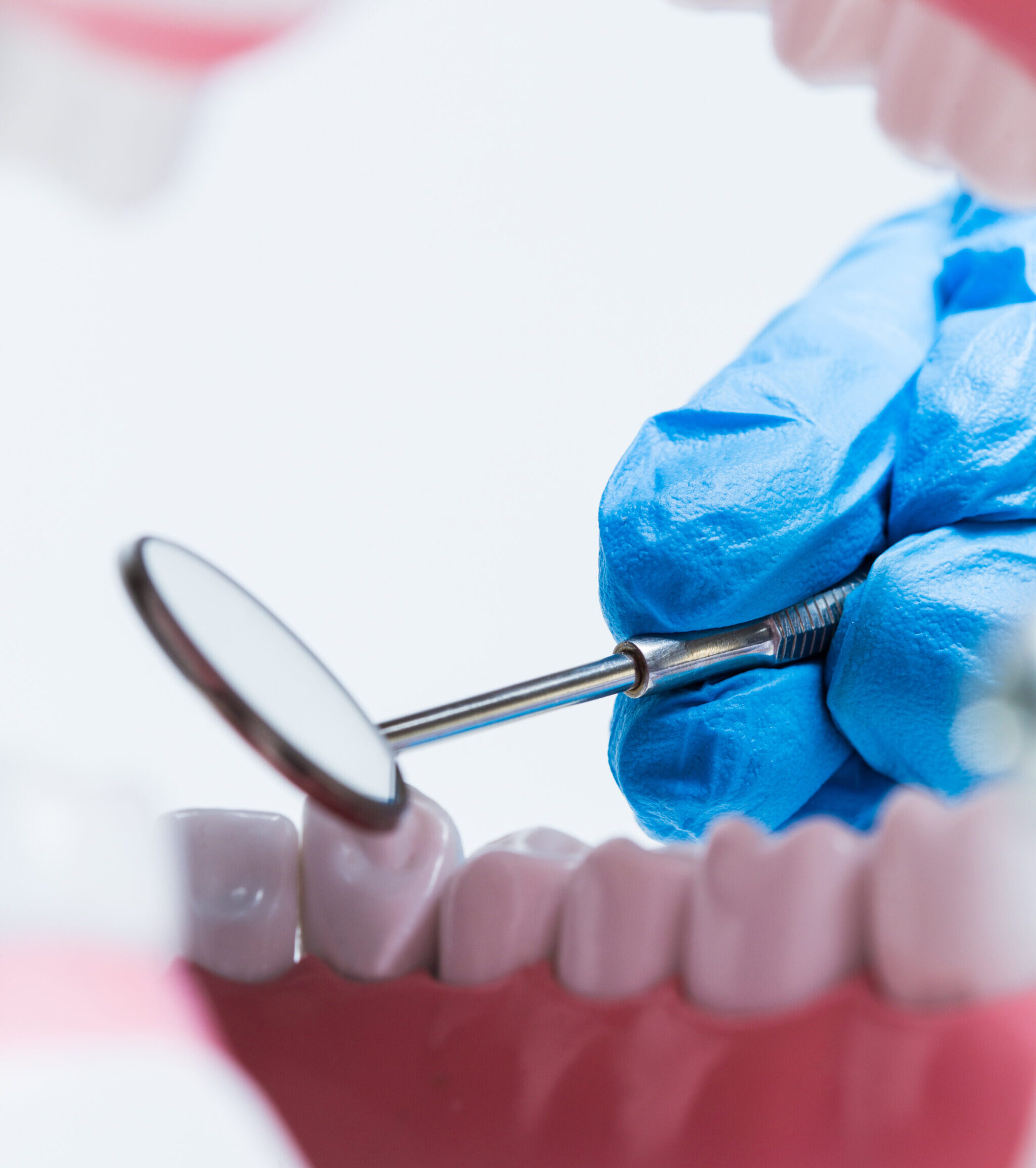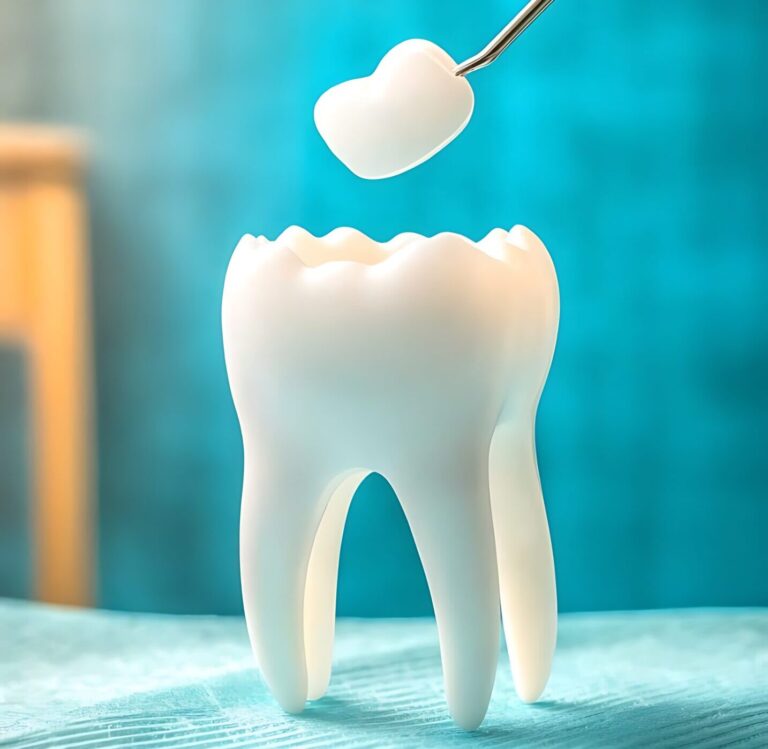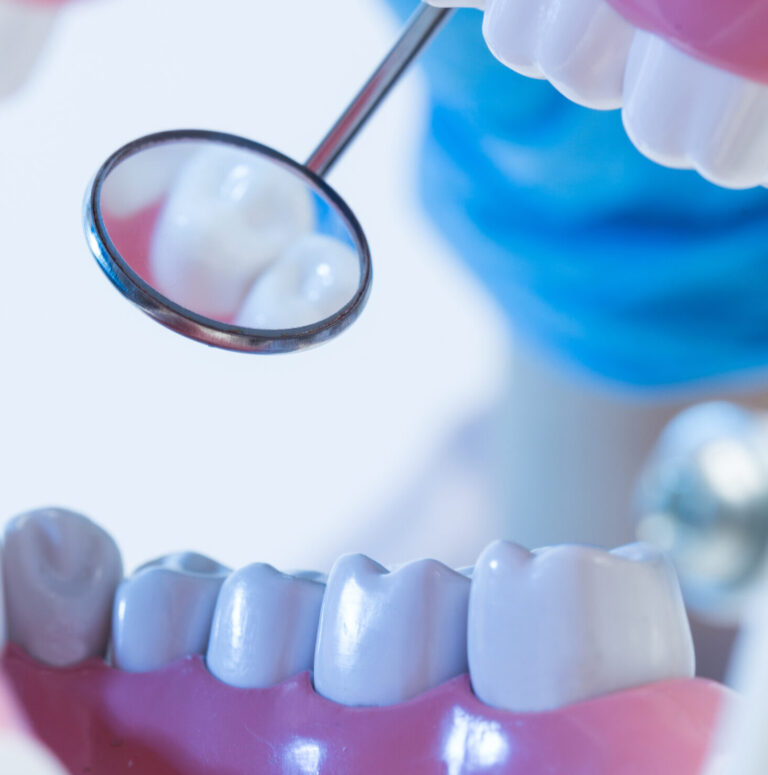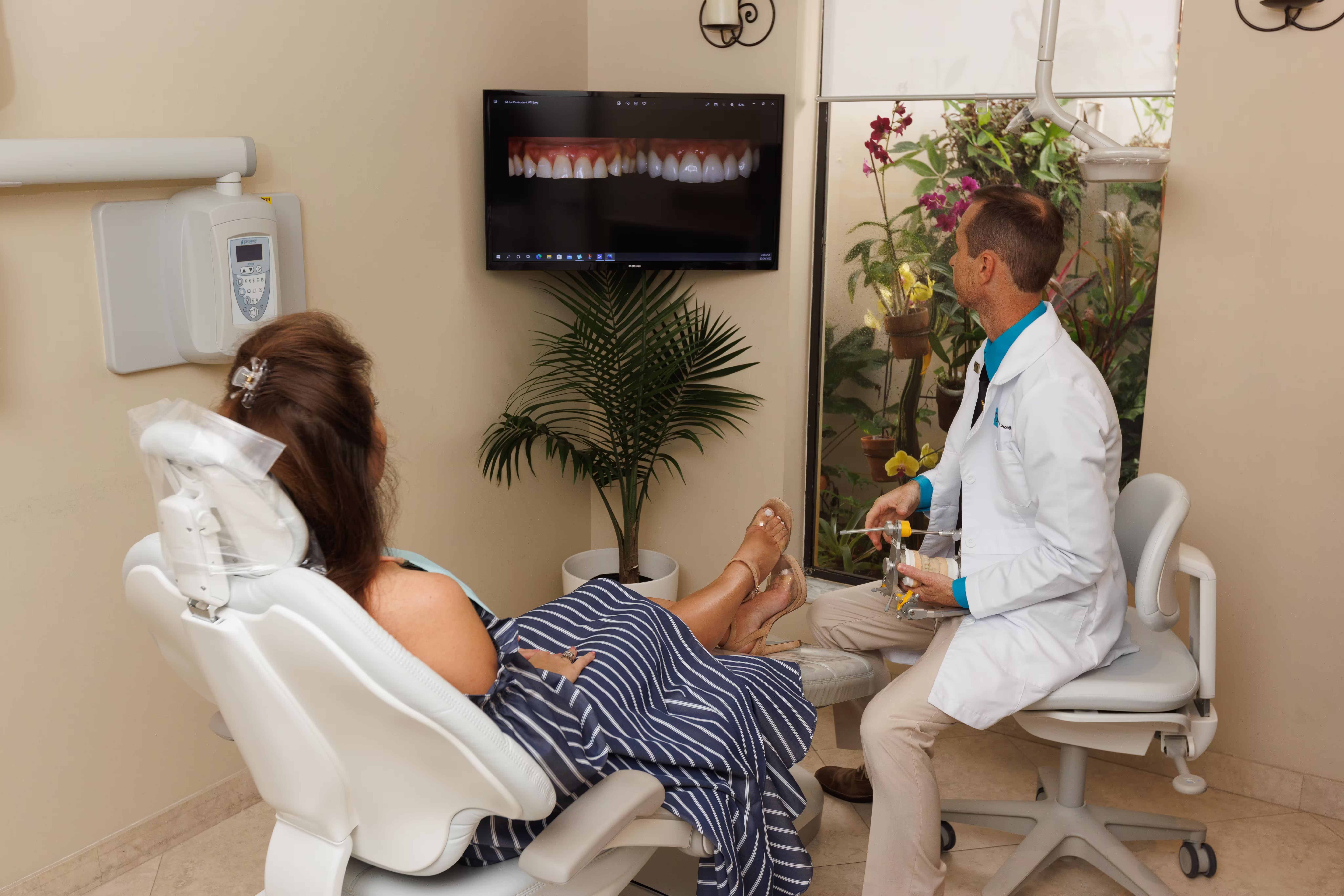A smaller part of your tooth is removed than when getting a dental crown

Dental restorations like inlays and onlays represent sophisticated solutions when traditional fillings cannot adequately address extensive cavity damage, yet the tooth structure remains healthy enough to avoid a full crown. These precision dental restorations offer patients an ideal middle ground between simple fillings and complete crown coverage, preserving valuable natural tooth structure while providing durable and aesthetically pleasing results. This advanced treatment has become increasingly popular in modern cosmetic dentistry due to its ability to restore damaged teeth while maintaining structural integrity.
At Ocean Breeze Prosthodontics, our experienced team understands that these specialized restorations provide patients with superior alternatives to traditional fillings when addressing moderate to extensive tooth damage. Dr. Goetz and his skilled staff create custom restorations that seamlessly integrate with your natural tooth structure, delivering both functional excellence and aesthetic beauty that enhances your smile. Our commitment to preserving your natural tooth structure while providing durable restorations ensures long-lasting results.
Specialized prosthodontic treatments to restore function and beauty with financing options for complex dental care.

Inlays and onlays are sophisticated restorations fabricated in a dental laboratory that provide significant advantages over conventional fillings and crown treatments. These precision restorations allow patients to preserve more tooth structure than required for a crown, while offering superior strength and durability compared to regular composite resin fillings. Dental inlays are specifically designed to fit within the chewing surface between the cusps, while dental onlays extend over one or more cusps to provide comprehensive protection.
The fundamental difference between dental inlays and dental onlays lies in their coverage area. Dental inlays restore the interior portions of the chewing surface without involving the cusps, making them ideal for moderate cavity repair. Dental onlays, conversely, cover one or more cusps and portions of the chewing surface, providing more extensive protection when larger areas require restoration. Both types are crafted with computer-aided systems in a dental laboratory, ensuring precise fit and optimal function.

Inlays and Onlays are a great cosmetic dentistry substitute to fillings since they last longer, and they can work better than crowns as they preserve more of your tooth structure.
They are made at a dental lab and shaped by computer-aided systems, so they fit your tooth faultlessly
They are designed to match the exact shade and shape of your tooth, giving you a perfect looking smile
They require the usual dental care: brushing, flossing, regular checkups and avoid chewing hard foods.
They are cost-effective and most insurance plans typically cover these procedures
They are strong and durable

These specialized restorations represent excellent cosmetic dentistry alternatives to conventional fillings since they last longer and work better than crown treatments for preserving natural tooth structure. These durable restorations offer numerous advantages that make them superior choices for moderate to extensive tooth damage.
Dental inlays and onlays are made in a dental laboratory and shaped by computer-aided systems, ensuring they fit your tooth perfectly while matching the exact shade and shape of your existing teeth. This precision manufacturing process creates durable restorations that provide long-lasting function and aesthetic appeal. A smaller portion of your tooth structure is removed compared to crown preparation, making the procedure more conservative while maintaining tooth integrity.
The final restoration requires usual dental care, including brushing, flossing, regular checkups, and avoiding chewing hard foods. These restorations are cost-effective solutions, and most insurance plans typically cover these procedures. The strength and longevity of these restorations make them excellent long-term investments for those seeking to restore damaged teeth while preserving healthy tooth material.
When a cavity is too extensive for simple fillings to cover the damaged area effectively, dental inlays provide an ideal solution. Porcelain restorations cover cavities or spaces that do not involve the cusps, preserving maximum healthy tooth material while providing strong restoration. These porcelain restorations are specifically crafted in a dental laboratory because they are shaped according to the exact cavity dimensions that need repair.
You can choose between gold versions for maximum strength or ceramic porcelain options for tooth-colored aesthetics. After tooth decay removal, precise molds are taken and sent to the lab for custom fabrication. Once the final restoration is ready, Dr. Goetz removes the temporary, and the restoration is perfectly fitted into the prepared surface.
Like their smaller counterparts, these larger restorations are specially prepared in a lab and used when restoration involves the cusps or one or more cusps of your tooth. Dental onlays require less preparation than a crown while providing more comprehensive coverage than smaller restorations. This makes porcelain options ideal for those who need extensive restoration without full crown coverage.
Similar to smaller restorations, precise impressions of your teeth are required. Following impression taking, a custom restoration is created in the lab and delivered at a second appointment. Both types are manufactured and then cemented as a single piece to perfectly fit the area requiring restoration, ensuring optimal function and aesthetics.

Inlays and Onlays involve a very similar procedure.
They differ in how much tooth structure is preserved.
When the cavity is too big and a simple filling can’t cover the damaged area, you could get an inlay. Inlays cover a cavity or space that does not involve the cusp (or chewing part) of your tooth.
Dental inlays are specifically made at a dental lab because they are shaped according to the cavity that needs to be repaired. You can choose between a gold inlay (more durable) or ceramic inlay (tooth colored).
After the tooth decay is removed, molds are taken and sent to the lab to be custom-made. Once ready, your dentist removes the temporary and the inlay is perfectly fit into the surface of the tooth that needs to be covered.
Like inlays, dental onlays are also specially prepared at a dental lab and are used when the restoration involves the cusp (or biting part) of your tooth.
A dental onlay requires less tooth preparation than a dental crown.
Similar to inlays, impression of your tooth are required. Following that, a custom made restoration will be created in a lab and delivered at a second appointment.
Both inlays and onlays are made and then cemented as a single piece to perfectly fit the part that needs to be restored.

These specialized restorations represent excellent cosmetic dentistry alternatives to conventional fillings since they last longer and work better than crown treatments for preserving natural tooth structure. These durable restorations offer numerous advantages that make them superior choices for moderate to extensive tooth damage.
Dental inlays and onlays are made in a dental laboratory and shaped by computer-aided systems, ensuring they fit your tooth perfectly while matching the exact shade and shape of your existing teeth. This precision manufacturing process creates durable restorations that provide long-lasting function and aesthetic appeal. A smaller portion of your tooth structure is removed compared to crown preparation, making the procedure more conservative while maintaining tooth integrity.
The final restoration requires usual dental care including brushing, flossing, regular checkups, and avoiding chewing hard foods. These restorations are cost-effective solutions, and most insurance plans typically cover these procedures. The strength and longevity of these restorations make them excellent long-term investments for those seeking to restore damaged teeth while preserving healthy tooth material.
Inlays and onlays involve a very similar procedure that differs primarily in how much healthy tooth material is preserved and the extent of coverage. The procedure for both types follows a systematic approach designed to maximize preservation while ensuring strong restoration.
During the first visit, Dr. Goetz carefully removes decayed portions and prepares the area for the restoration. Detailed impressions are taken and sent to our lab for custom fabrication of your porcelain restoration. A temporary restoration protects your prepared tooth until the permanent version is completed.
At the second appointment, you return for placement of your custom restoration. The temporary is removed, and the porcelain restoration is carefully fitted and bonded to ensure perfect integration with your existing teeth. The procedure concludes with final adjustments and polishing to create a natural-looking result that functions optimally with your existing bite.


Many people wonder about the differences between these restorations versus crown treatments when addressing significant tooth damage. The main difference between getting a crown and getting dental inlays and onlays lies in how much healthy material must be removed during preparation. Crown treatment involves removing a larger portion of your tooth because the crown covers the entire surface and all cusps, while these restorations cover smaller, more targeted areas.
These specialized restorations preserve significantly more healthy tooth material compared to crown preparation, making them more conservative treatments. Prices also differ between these treatment options, with crown procedures sometimes being more expensive. The strength and longevity of both treatments are comparable, but these restorations offer the advantage of preserving healthy tooth material.
For those who want to maintain as much healthy tooth material as possible while achieving strong restoration, these treatments represent the ideal compromise between conventional fillings and full crown coverage. This conservative approach ensures long-term strength while maintaining optimal tooth health.
At Ocean Breeze Prosthodontics, we bring over 25 years of clinical experience and advanced prosthodontic training to every restoration procedure. Dr. Goetz’s extensive background ensures that your porcelain restorations receive the meticulous attention and skill necessary for optimal results. Our commitment to preserving healthy tooth material while providing strong, aesthetically pleasing restorations sets us apart as leaders in advanced dental care.
We understand that choosing these advanced restorations represents an essential investment in your oral health. Our team takes time to thoroughly explain the process, discuss the benefits of preserving healthy tooth material, and ensure you feel completely comfortable with your treatment plan. From initial consultation through placement, we provide personalized care that addresses your specific needs while delivering lasting satisfaction.
Contact Ocean Breeze Prosthodontics today at (561) 279-6999 to schedule your consultation and discover how these advanced treatments can restore your teeth while preserving your valuable healthy tooth material. Schedule your appointment online to begin your journey toward optimal oral health with our strong, precision-crafted restorations.
Inlays and onlays are often covered by dental insurance plans. Depending on the type of plan you have, this coverage can be full or partial. Although inlays and onlays may cost more than regular fillings, they are much stronger and more durable. This means they are much more cost-effective. You should always ask your dental insurance about the extent of your coverage for these types of procedures to make a balance between benefits and costs.
The main difference between getting a crown and getting an inlay/onlay is that a crown involves a larger part of your tooth being removed. This is because the crown covers the whole biting part of your damaged tooth, while the inlay/onlay covers a smaller portion of it. Prices also differ in these types of procedures, with crowns sometimes being more expensive than inlays or onlays.
In general, inlays and onlays are long-lasting restorations. If well taken care of, they could last 10-20 years, similar to crowns. The lifespan of an inlay or an onlay will highly depend on your oral care habits, your bite, and the quality of the dental work you get. Keeping good oral hygiene and regular checkups will definitely help your inlays and onlays last longer and maintain good oral health.
You will typically need two office visits to get your inlay or onlay. On the first visit, Dr. Goetz will carefully remove the decayed part of your tooth and cover it temporarily until the inlay or onlay is custom-shaped at the dental lab. On your second visit, you will get the final restoration bonded to your tooth and get the natural-looking smile you were waiting for.
Dr. Goetz will apply local anesthetics to the area. This way, you avoid feeling pain during the procedure. So you will probably not feel any pain during the inlay or onlay procedure, just a few seconds after the doctor delivers the anesthetic. It’s recommended to take deep breaths and try to stay calm. The team at Ocean Breeze can help you relax further by using essential oils and other relaxation techniques to deal with any possible fears or feelings of anxiety.
**Requested time is not final until you receive confirmation from our office. Please do not submit any Protected Health Information (PHI).
"*" indicates required fields

**Requested time is not final until you receive confirmation from our office. Please do not submit any Protected Health Information (PHI).
"*" indicates required fields